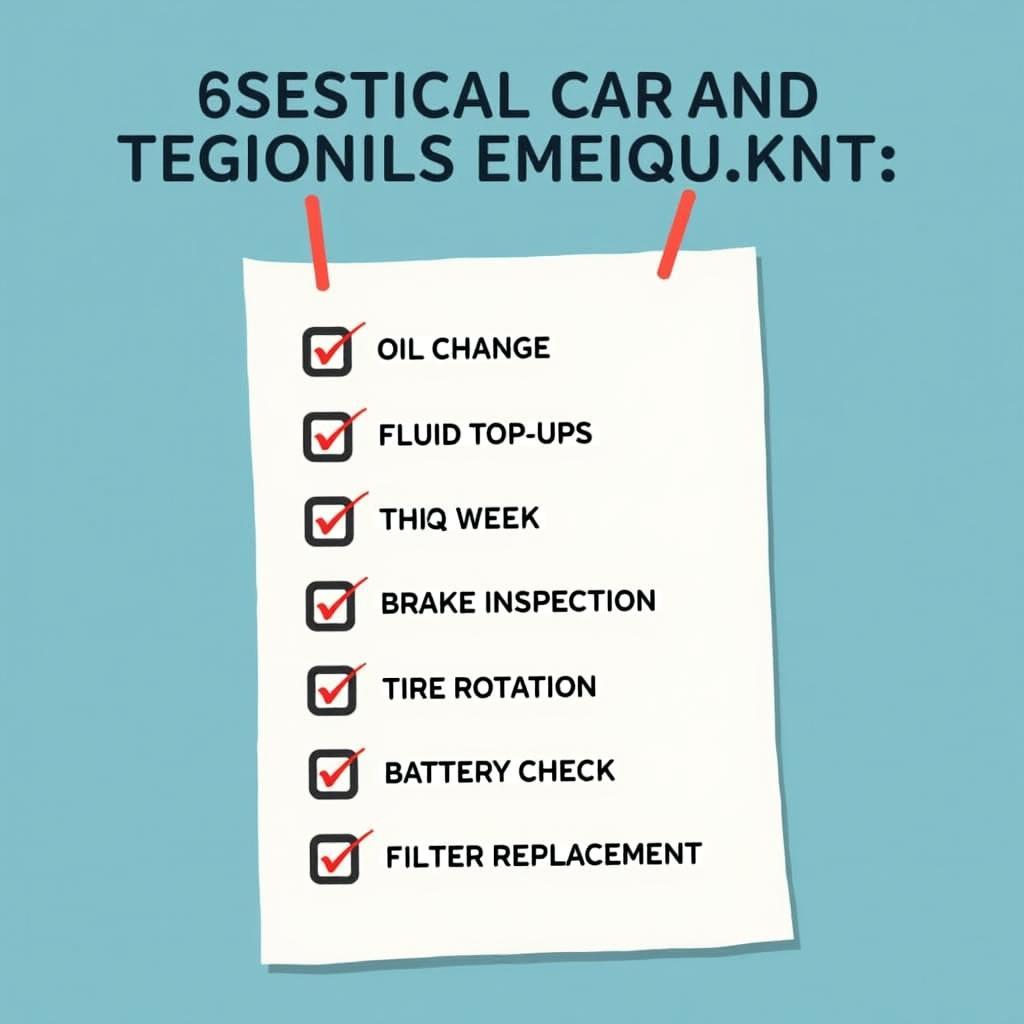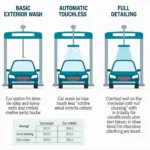Car servicing can seem like a black box for many drivers. You know it’s important, but what all is involved in service of a car, and why does it matter? Understanding your car’s service needs empowers you to make informed decisions, ensuring its longevity and optimal performance. This article will demystify car servicing, exploring the various aspects involved, from routine checks to major repairs.
Knowing how to get your car serviced properly is crucial for maintaining its health. A regular service schedule prevents small issues from escalating into costly repairs down the road. Think of it like regular checkups with your doctor: preventative maintenance is always better than reactive treatment.
What exactly does a car service entail? It’s a comprehensive check and maintenance procedure covering various components, ensuring they function correctly and efficiently. This can range from something as simple as an oil change to more complex tasks like brake inspections and transmission fluid replacement. The specifics depend on the car’s make, model, age, and mileage. You can learn more about getting your car serviced at how to get your car serviced.
Decoding Your Car’s Service Schedule
Every car comes with a manufacturer-recommended service schedule, outlining the necessary checks and maintenance tasks at specific mileage intervals. This schedule is designed to address wear and tear and prevent potential problems. Adhering to this schedule helps maintain your car’s warranty and resale value.
Key Components of a Standard Car Service
A typical car service involves a range of checks and procedures, including:
- Oil and Filter Change: This is perhaps the most fundamental service task, essential for lubricating the engine and preventing wear.
- Fluid Top-Ups: Checking and topping up essential fluids like coolant, brake fluid, power steering fluid, and windshield washer fluid.
- Brake Inspection: Evaluating the condition of brake pads, rotors, and lines to ensure optimal stopping power.
- Tire Rotation and Pressure Check: Rotating tires promotes even wear and extending their lifespan. Correct tire pressure ensures optimal fuel efficiency and handling.
- Battery Check: Assessing the battery’s health and charge to prevent starting issues.
- Filter Replacements: Replacing air filters, cabin air filters, and fuel filters ensures clean air intake and optimal engine performance.
- Belt and Hose Inspection: Checking for wear and tear on belts and hoses to prevent leaks and potential engine damage.
- Exhaust System Check: Examining the exhaust system for leaks and damage, ensuring efficient emission control.
- Lights and Electrical System Check: Ensuring all lights and electrical components are functioning correctly.
You might wonder if a car service center can come to your home. Find out more at can the car service centre people come at home.
Understanding the Different Types of Car Services
Beyond the standard service, there are different service levels depending on the car’s mileage and age. These can include interim services, full services, and major services.
Interim Service:
An interim service is typically recommended every 6 months or 6,000 miles and covers essential checks and replacements, such as oil and filter changes.
Full Service:
A full service is more comprehensive, performed annually or every 12,000 miles, and covers a broader range of checks and maintenance tasks.
Major Service:
A major service is the most extensive and is usually recommended every 24,000 miles or 2 years. It includes all the elements of a full service, plus more in-depth checks and replacements.
Knowing how to verify if your car service is done properly is also important. Learn more about it here: how to verify car service is done properly.
“Regular servicing not only ensures your car runs smoothly but also helps identify potential issues before they become major problems,” says John Smith, Senior Automotive Technician at Auto Experts Inc.
Addressing Specific Concerns and Repairs
Car servicing also involves addressing any specific concerns or repairs that may arise. This could include anything from replacing worn-out brake pads to fixing a faulty electrical system.
“It’s always best to address any unusual noises or performance issues promptly,” advises Jane Doe, Certified Mechanic at Reliable Auto Repairs. “Early detection can save you time and money in the long run.” Do they remove car dents in Nexa service stations? Find out by visiting do they remove car dent in nexa service station.
What’s involved in car servicing in India, according to Quora? Check out this helpful resource: what is done in car servicing india quora.
Conclusion
Understanding What All Is Involved In Service Of A Car Is crucial for every car owner. By following the recommended service schedule and addressing any issues promptly, you can ensure your car remains in top condition, providing safe and reliable transportation for years to come.
FAQ
- How often should I service my car?
- What is the difference between an interim and a full service?
- What is included in a major service?
- How much does a car service typically cost?
- How can I find a reputable car service center?
- What should I do if I hear unusual noises from my car?
- How can I verify that the service has been done correctly?
Need assistance? Contact us via WhatsApp: +1(641)206-8880 or Email: [email protected]. Our customer service team is available 24/7.


